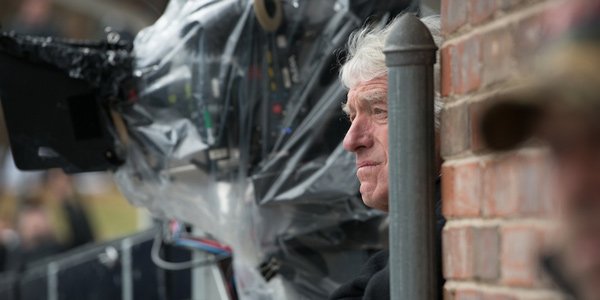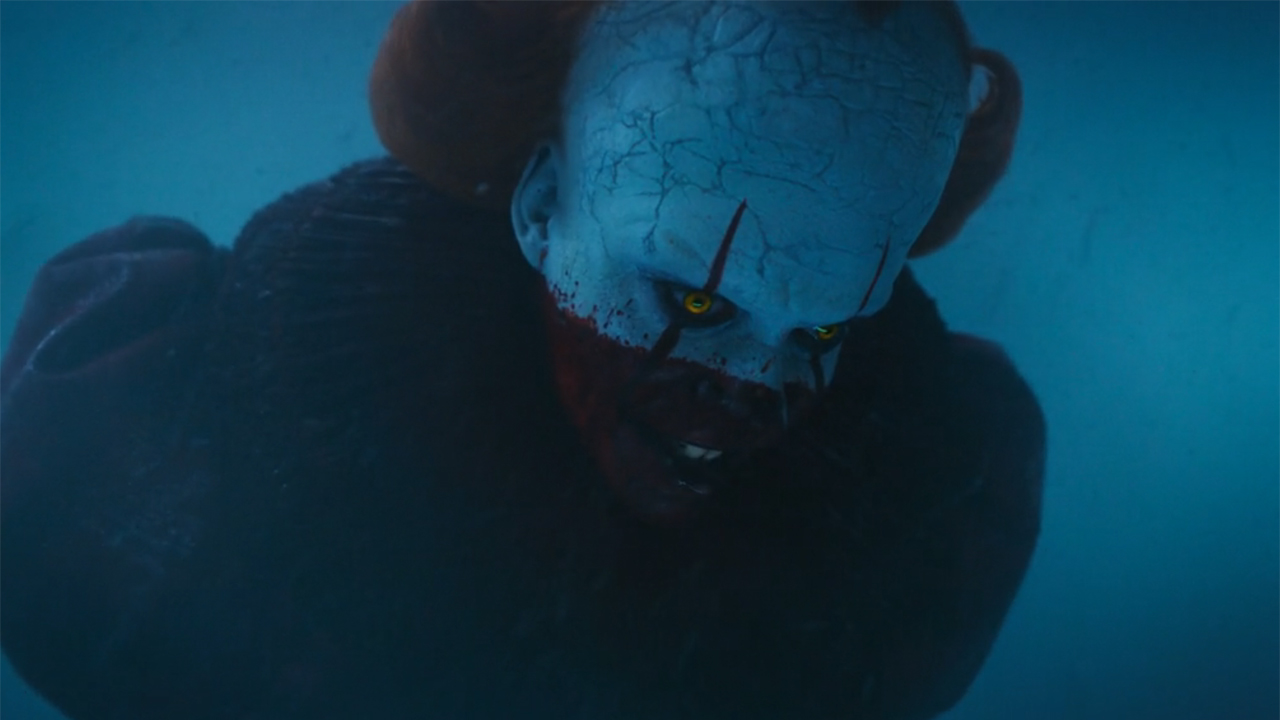The 10 Best Shots From Master Cinematographer Roger Deakins

It's not just the stellar cast and the Oscar-nominated director that makes Prisoners look like more than your average kidnapping thriller. Like many of the most gorgeous films of the last decade Prisoners was shot by cinematographer Roger Deakins, the 10-time Oscar nominee whose work on films like No Country for Old Men, Skyfall and The Man Who Wasn't There has created some of the most gorgeous images in film history.
"He's a Jedi," says Prisoners star Paul Dano, who marveled at an early scene in the film, set in the woods at night, that was lit only by flashlights. Hugh Jackman, who isn't even in that scene, was astonished by the same one, pointing out the way a gas station lurks in the background behind Jake Gyllenhaal's character "like an alien ship." But since he's playing a father desperately searching for his missing daughter, Jackman focused more on the many special weather effects that Deakins was able to masterfully film-- and the demands he made to have the weather looking perfect in every shot:
It becomes very ominous, the way there is not one sliver of sunshine in the entire movie, even though we're shooting in Atlanta. The sun came out on Day 2, and [Roger] goes "Oh, let's go inside." I'm like, "Really." He said, "zyeah, I don't like the sun. I said, "Man, we've got 60 days to go. Are you going to go inside every time there's sun?" "Yeah." It probably takes a 10-time nominee to demand that.
Deakins may have never won any of the 10 Oscars he's been nominated for, but he's a living legend by pretty much any description, and in honor of Prisoners' release in theaters this weekend we're honoring Deakins by picking out favorite shots and moments from some of his most beautiful films. From a hallway bursting into flames to a snowy parking lot to a fight in a glossy high-tech building, Deakins makes both banal and extraordinary spaces seem more than themselves. Celebrate his stellar career with us below.
Barton Fink
The wallpapered hallway at the Hotel Earle might be the ugliest location we're celebrating, but Roger Deakins manages to make it magically sinister, even before it bursts into Biblical flames. Barton Fink does for rundown flophouses what The Shining did for regal hotels, imbuing the hallway with its own sinister personality, setting up the surreal danger to come well before Barton realizes what he's gotten himself into.
Superior cinematography isn’t necessarily about choosing the most beautiful or the most inventive angles. More often than not, it’s about finding ways to subtly make a moment more beautiful, more terrifying, more depressing, more something. During the utterly brilliant escape reveal in Shawshank Redemption, Deakins cuts to a camera inside the hole the second the poster is ripped off and slowly lets it zoom away from the dumbfounded faces agape inside the cell. It’s a slow, stunning burn and more importantly, it’s the perfect way to illustrate how blindsided they were by Andy’s plan. It’s the best shot in one of the best movies ever made.
Your Daily Blend of Entertainment News
Fargo
If Fargo tells us one thing visually, it's that Minnesota is really cold. From the opening shot to the closing scene, we're treated to numerous shots of snow-covered roads and expansive views of nothing but snow for miles. Snow serves as the backdrop for many a scene, but the one that stands out as being particularly revealing is when Jerry Lundegaard leaves his father-in-law's office. We watch him from Wade's view, high up looking down at the tiny figure that is Jerry, trudging through the snow toward his car after royally blowing his business proposal. From this vantage point, never has Jerry seemed more alone, and we get the sense that he's been this slowly-moving dot in the snow his whole life.
The best kinds of dream sequences are those that warp perception of reality, and Deakins accomplishes this with simplicity and elegance in the very first shot of the fantasy scene in the Coen brothers’ The Big Lebowski. Not only is the camera positioned at such depth that it makes it seem as though The Dude (Jeff Bridges) is dancing in an impossibly large room, the beam of light casting giant shadows of the lead’s flailing movements on the far wall is a beautiful blend of stylish and comedic.
O Brother, Where Art Thou?
In his fifth collaboration with the Coens, Deakins added his own touch of Americana within this imaginative adaptation of Homer's The Odyssey. The idea was for a general sepia tone, but Deakins also dreamed of vibrant blues that would draw its inspiration from hand-tinted pictures. To achieve this look, Deakins abandoned chemical color timing and experimented with test footage in the burgeoning technologies of digital color correction. O Brother Where Art Thou? became the first feature film to be entirely color corrected in this process, which has since become industry standard. You can hear more about this in the documentary Side by Side. But above, you can see Deakins' concept for the colors play out in conjunction with his masterful skills in framing to fluidly capture action. Note the colors and how the characters glide in and out of frame in this scene’s final moments. In a word: it’s perfection.
The Village
Deakins’ lone collaboration with M. Night Shyamalan produces – to no one’s surprise – the richest-looking Shyamalan misdirection opera in the director’s 20-year career. The whole movie is gorgeous, a rustic period thriller with ample secrets to hide. But Shyamalan’s designation of red as “the bad color” unleashes a passion in Deakins, which he brilliantly funnels into an aerial shot hovering over Bryce Dallas Howard, conveying the staggering amount of danger her blind character finds herself in without saying a single word.
The Assassination of Jesse James by the Coward Robert Ford
Rarely has Deakins been assigned to shoot a Western. And yet, one look at his approach to the wide-open expanse of Andrew Dominik’s breathtaking Jesse James, and even the least-trained eye realizes frontier America was meant to be photographed in majestic golden tones by the gifted British cinematographer. Choosing one shot to highlight in Jesse James is a fool’s errand, and yet, for the benefit of this exercise, I’ll mention this fascinating shot of doctors photographing Jesse’s corpse … hammering home the point that, even in death, the outlaw existed as a larger-than-life reflection in the public’s curious eye.
It's a coincidence that animated films have gotten more beautiful in the time that Deakins has been working, but only a little-- he's done work as a consultant on Rango, How To Train Your Dragon and other gorgeous efforts. His best contribution to animation, though, is Wall-E, with both the ravaged vistas of Earth and the gleaming space world of the Axiom coming to vivid life under Deakins' guidance. The most beautiful sequence, Wall-E and Eve's dance through space, has both the ache of romance and the loneliness of space-- two robots able to connect better than actual humans can.
True Grit
When I first saw True Grit, Roger Deakins' name earned an actual cheer from the audience in the theater. I’ve never seen that for a cinematographer before, but as one of America’s greatest—if not the greatest—cinematographers, Deakins was destined to shoot Westerns. I’ve actually wept over the lapsing landscapes he captured in this movie, one giving way to another and another displaying the majesty of untamed America. But the best moment is more kinetic. While the action of this final showdown is expertly captured, my favorite moment is the wide shot of Ned and Rooster from LaBoeuf’s perspective just after he’s fired his shot. Deakins’ distance here forces us to hold our breaths with Mattie and LaBoeuf. We’re so far away we must wait to see if the day is saved, if the man will fall.
Skyfall
With any fight scene due credit must be given to the choreographer, and this tight fistfight with occasional gunfire between James Bond (Daniel Craig) and Silva henchman Patrice (Ola Rapace) is certainly thrilling for that reason, but it’s Deakins’ photography that takes it to a whole new level. The camera slowly creeps in as the battle gets more extreme, adding even more pressure to the already-tense scene, and the silhouettes lost in the floating jellyfish helps the audience get lost in the fight, but also does a great job keeping the characters identifiable.
